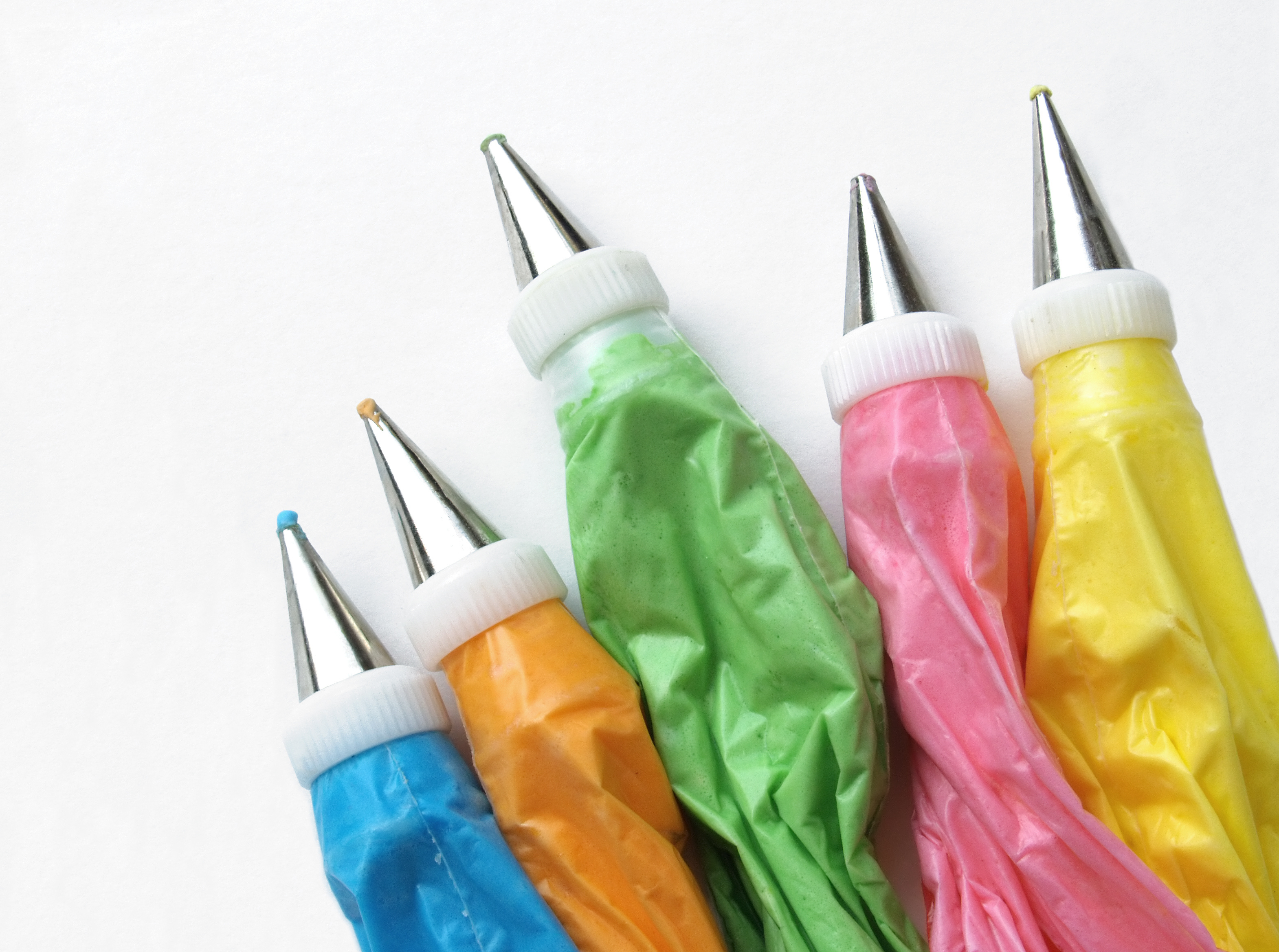What is Royal Icing?

Royal Icing is a medium which is used to decorate cookies and cakes. It's made from icing sugar, egg white, water, and flavourings. Royal icing sets hard due to the egg white, giving you more flexibility when it comes to decorating.
Ready mixes are now available saving you heaps of time, available in white and various colours, all you need to do is add water and flavourings.
There are three different icing consistencies which are used to decorate cookies: Stiff consistency, medium consistency and flood consistency.
What is stiff consistency?
Stiff consistency is straight from the mixer, once you have mixed the contents with water. It is spreadable, not pipeable. To avoid air bubbles, mix it on medium-low speed for approximately 2-5 minutes. While the icing will increase in volume, lighten in colour as it is mixing, it turns out thick and dense, meaning it won't be fluffy. It's sort of like cream cheese.
Stiff icing can be used for brush embroidery, borders, roses, basket weave and ruffles.
What is medium consistency?
The best way to describe it is like a soft serve consistency, sort of on the verge of melting. It holds a very soft peak, doesn't spread on its own; it can be smoothed out with a scribe tool. To achieve this consistency, start with stiff icing and add a few drops of water at a time. It won't take much water to get the texture, so be careful not to add too much.
Medium consistency is thin enough to flow out smoothly from a small nozzle, but not thin enough to lose the shape of the design you are piping.
Medium icing can be used for filigree, script writing, transfers, lettering and quilting.
What is flood consistency?
This is used for applying a smooth layer of icing onto a cookie. This icing should be thin enough that is smooths out on its own; it shouldn't be so thin that it runs off the edges of the cookie. Flood icing can be used for outlines and to fill a cookie; it's important to get the consistency right. It takes some practise, please don't get frustrated if you don't get it the first time.
To achieve this consistency, start with stiff icing and add a couple tablespoons of water at a time. To test, take a spoonful of icing and drop it back into a bowl, it should take between 14-16 seconds for the icing to smooth itself out.
Depending on how much icing you apply to your cookie or the pressure that you put on the piping bag, the consistency may need to be adjusted. 14-16 seconds works best for us, we have gone through so many trial and errors, and this is how we have learnt.
If you have added too much water, do NOT add more icing sugar. Add a spoonful of stiff icing to thicken it up again. Make sure you have some at hand for this purpose.
Flood icing can be used for flooding, wet on wet technique, and tiny details.
How to store royal icing?
It's better to have too much icing than not enough. It's good to have royal icing left over after finishing a project. Never store the icing in the piping bags overnight. Always empty the bag into an air-tight container and put the icing in the refrigerator. Be sure to clean the inside edges of the container before closing it tightly.
The icing will separate after sitting for several hours, so give it a good stir before using it again.
The old myth when at culinary school was to put a damp paper towel over the icing inside the container so that it wouldn't form a crust. We never do this now, as the moisture from the paper towel changes the consistency of the icing.
You can freeze the icing if you don't plan on using it within ten days. Be sure to use it within a month though; freezer burn is not a good taste.
What is a wet-on-wet technique?
It's a simple technique, but you have to be quick on this to achieve the desired effect you want. It's called wet-on-wet because the designs are applied while the base layer of the icing is still wet, which allows the designs to dry flat and smooth. But if you don't pipe your designs in time, the base layer will start to dry, and you'll end up with wrinkles and bumps. You have a window of approximately 5 minutes to do this before it starts to crust!
How to dry iced cookies?
To get a smooth finish on your cookies, be sure there is a fan in front to dry them. Or you can keep the cookies in an air-conditioned room.
Humidity is the death of everything; it will cause the cookies to become porous, dull, fragile and can also leave you with a bumpy and uneven surface. Dull or bumpy icing can also be caused by icing that is too thin, so make sure your flood consistency is not too runny.
How to get rid of air bubbles and colour bleed?
Icing that is too thin can also lead to air bubbles, uneven texture, fragility (a big problem with royal icing transfers) and even colour bleed. It helps to keep the icing on the thick side so that you don’t encounter these problems. When making flood consistency icing, try making it a day ahead of time so that the air bubbles can rise to the surface. Then, when you’re ready to use the icing, stir it by hand to get rid of the bubbles.
When making dark colours, try to use as little colour as possible to get the shade you want. Too much food colouring in the icing will lead to colour bleed. Make the icing several hours ahead of time so that the colour can darken on its own.
My nozzles are clogged; what shall I do?
The smallest tip is a Wilton #1, this has a larger opening than a PME tip 1. Don't use super small nozzles, such as a double 0. If you are experiencing issues, strain your icing through a nylon cloth while filling your piping bag, this helps remove any lumps or large dry bits.
The butter had bled onto the cookie, how can I prevent this?
When the weather is too warm, butter bleed can become a huge issue. This is when the butter from the cookies melts enough to seep into the royal icing and make it look blotchy or yellow.
Unfortunately, once this happens, there's not much you can do. There are creative ways to covering it up, such as adding lustre dust or hand painting some designs over the stained areas. If that is not an option, you can wait and hope for the best, that the butter bleed covers the entire cookie so that at least it's not blotchy. The same rules for preventing colour bleed apply here. Thin, porous icing can exacerbate the problem, so make sure that your icing is not too thin when flooding and also make sure to dry your cookies quickly in front of a fan!
You can also make tweaks to the cookie recipe, adding more flour for example. It is all about trial and error; the outcome of any recipe depends on lots of different factors.


